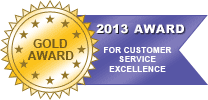It’s quite natural and very easy to make mistakes when building a website, whether it is your first venture online or if you have taken up web hosting for a few websites already. Mistakes do cost you though and in terms of S.E.O., because your are counting on the way the search engines see your website, a simple mistake can multiply and result in greatly reduced visitors.
Below are 5 areas that each contain 5 common pitfalls you must avoid at all costs if you wish your website to be successful. Following this simple guide will improve the experience of your visitors, improve the way the Googlebot and friends index the site and will improve the overall S.E.O. of your website.
Let’s get started … Here are 25 deadly sins of website building; 5 things never, ever, to do when…
1) … GIVING YOUR WEB-PAGES TITLES
The titles of your website are integral to the promotion of your website. They are the first part of your website that will be seen in the search results pages of Google and Yahoo! and therefore the one element that the viewer will use to decide whether to visit your web page or not.
NEVER: Choose too complicated or too vague a title that isn’t relevant and/or has no relation to the content on the page. Your website is not a newspaper that a reader has already committed themselves to so make your titles simple rather than really clever.
NEVER: Use default or vague titles like “Untitled” or “New Page 1” … This gives the Googlebot and your visitors nothing to work with… They should be finding what they are searching for … not have to guess what your content is about.
NEVER: Use a single title tag across all of your site’s pages or a large group of pages. Each page MUST have a unique title that is relevant to the content.
NEVER: Using extremely lengthy titles that are unhelpful to users. Keep it short and sweet.
NEVER: Stuff unneeded keywords in your title tags; this will be seen as content spamming by Google and the Search Engines and your website will be penalized for it.
If you are using BlueVoda, you should use: View > Page Properties to edit the title of your web pages. You should choose something, short, concise and relevant. Make sure it contains a couple, at least one, of your keywords but don’t go overboard!
2) … CREATING YOUR WEBSITE’S NAVIGATION
Your website exists to be useful to your visitors and it is not being very useful if a visitor get’s lost while navigating it. In my opinion your visitors should never have to use the Back Button on their browser. You should provide them basic navigation from within the website so that they can get, easily, to wherever they want to be. As well as creating both an XML Sitemap (for the Googlebot) and a HTML sitemap for your visitors there should always be some text navigation for the user to use.
NEVER: Create a complex webs of navigation links, e.g. linking every page on your site to every other page. This is overkill and will confuse not only you but your visitors as well!
NEVER: Go overboard with slicing and dicing your content (so that it takes twenty clicks)
NEVER: Have a navigation based entirely on drop-down menus, images, or animations
– many, but not all, search engines can discover such links on a site, but if a user can reach all pages on a site via normal text links, this will improve the accessibility of your site manyfold.
NEVER: Let your HTML site map page become out of date with broken links
NEVER: Create an HTML site map that simply lists pages without organizing them, for example by subject matter. The links alone are useful out of context.
You should always make the navigation of your web pages easy. Your visitors must be able to easily navigate around your site and it must be easy for them to return to a contents page if they quickly wish to return to a piece of content. How are your visitors to link to a piece of your content if they cannot find it?
3) … CREATING CONTENT FOR YOUR WEBSITE
Your content is the reason that visitors visit your web-pages. Without content, your website has nothing to offer; without good content you have a collection of designs. When you are creating your content, never do the below things…
NEVER: Dump large amounts of text on varying topics onto a page without paragraph, subheading, or layout separation.
NEVER: Rehash (or even copy) existing content that will bring little extra value to users. You should also avoid having duplicate or near-duplicate versions of your content across your site
NEVER: Insert numerous unnecessary keywords aimed at search engines and are annoying or nonsensical to users. Creating your content around your keywords is the wrong thing to do … You must optimize your content with your keywords.
NEVER: Have blocks of text like “frequent misspellings used to reach this page” that add little value for users.
NEVER: Deceptively hide text from users, but display it to search engines. The search engines know when you are doing this.
Your websites content, like it’s navigation, should be hierarchical, with clear and original subject matter, set-up like the best organized library in the world. If it is of no value to your visitors then it has no place on your web page. Make it all really, really useful!
4) … CREATING LINKS WITHIN YOUR WEBSITE
Links are the life-blood of the Internet and are essential to the promotion of your website. Getting links to your content from relevant anchor text (the text that contains the link) should be your ultimate goal when creating content. You can do some great S.E.O. on your internal links by following the notes below.
NEVER: Write generic anchor text like “page“, “article“, or “click here” and never write long anchor text, such as a lengthy sentence or short paragraph of text.
NEVER: Use anchor text that is off-topic or has no relation to the content of the page that is being linked to.
NEVER: Use the page’s URL as the anchor text in most cases (although there are certainly legitimate uses of this, such as promoting or referencing a new website’s address)
NEVER: Use CSS or text styling that make links look just like regular text. Googlebot knows when you are doing this and doesn’t like it one bit.
NEVER: Use excessively keyword-filled or lengthy anchor text just for search engines
Links are very powerful and should be used properly. They are a massive part of where your website appears on the Search Engine Results Pages and are responsible for how your website appears for certain searches. Always treat your links with a great amount of respect.
5) … PROMOTING YOUR WEBSITE
NEVER: Attempt to promote each new, small piece of content you create; go for the big, interesting items.
NEVER: Keep promoting the same piece of content repeatedly. You will alienate your viewers! Keep creating!
NEVER: Spam. Don’t even consider it! It is completely unacceptable. Use a mailer that uses a Double Opt-In like AWeber to ensure that your mailing list understands that they have been added to your mailing list and what their choices are as far as unsubscribing from your mailing list
NEVER: Promote your website based on mis-truths. Always tell the truth, the whole truth and nothing but the truth.
NEVER: Stop promoting your website the right way. In fact, never stop learning and promoting your website… This would be the worst mistake to make; it is tantamount to failure.
Follow the tips above and you are guaranteed greater success for your website because you will not be making any basic, simple mistakes. The list above is by no means exhaustive; there are plenty more mistakes to make. To keep you on the right track, There’s much more useful information in our free .PDF report which I recommend that you read (there is a link just below).
Good luck!
Further recommended reading: The Secrets to Promoting your Website Online
contains loads of useful information regarding S.E.O., and Link Building











